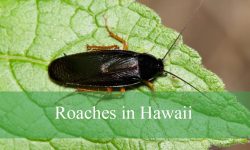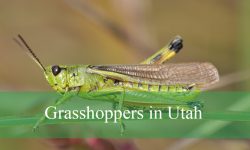Arkansas is home to a rich variety of small birds that brighten its forests, fields, and neighborhoods. Discovering the 35 Small Birds in Arkansas offers a great chance to learn about the most common and colorful species found throughout the state.
These small birds, such as the American Goldfinch, Carolina Wren, and Ruby-crowned Kinglet, add beauty and lively sounds to Arkansas’s natural landscape. This guide to the 35 Small Birds in Arkansas provides clear identification tips and pictures to help bird enthusiasts recognize each species easily.
Knowing the different types of small birds in Arkansas enhances the birdwatching experience and supports efforts to protect their habitats.
Common Small Birds Found in Arkansas
Pine Siskin (Spinus pinus)
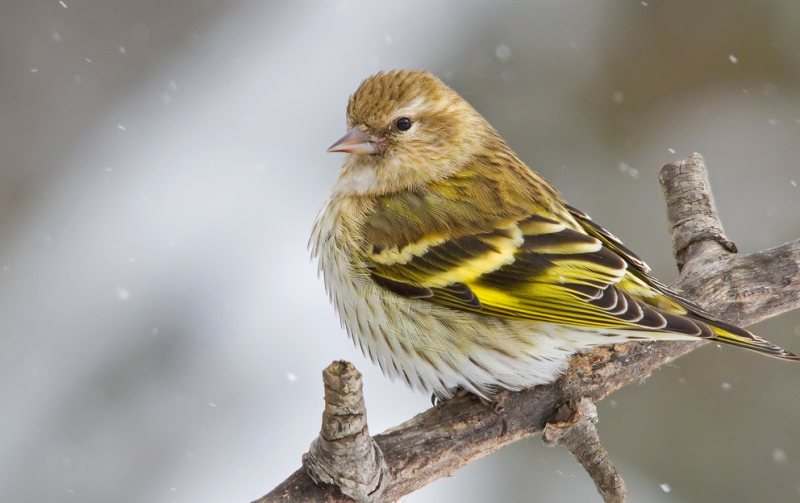
The Pine Siskin is a small finch measuring about 4.5 to 5 inches (11-13 cm) long, with streaky brown and yellow plumage. These birds often form large flocks, especially in winter, when they search for seeds in conifers and feeders.
Pine Siskins have a sharp, buzzing call and are known for their erratic flight and social behavior. Their streaked appearance and yellow wing patches help distinguish them from similar finches. They feed primarily on seeds but will also take insects occasionally.
In Arkansas, Pine Siskins are most common during the colder months when they move through woodlands, parks, and backyard feeders. Their presence can be quite variable year to year depending on food availability.
American Goldfinch (Spinus tristis)
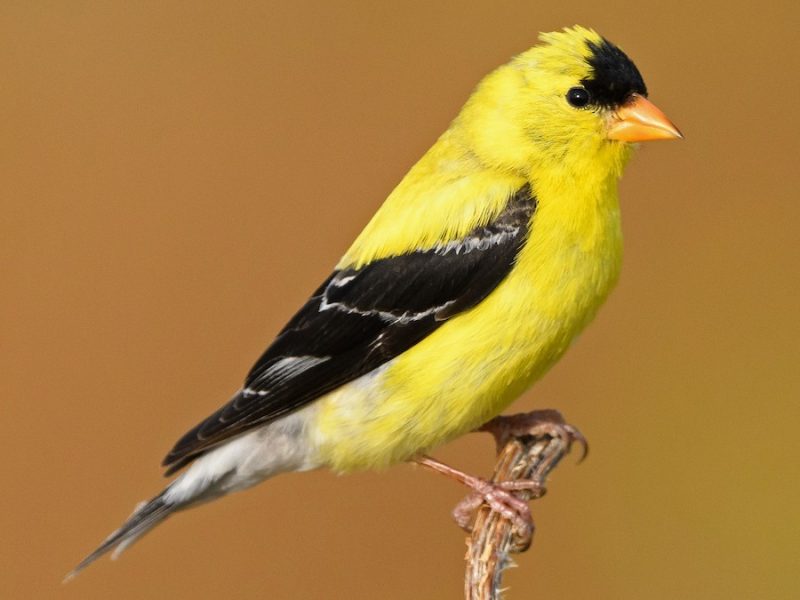
The American Goldfinch is a small, vibrant bird famous for its striking yellow plumage during the breeding season. Males display bright yellow feathers with black wings and tail tips, while females and non-breeding males show more muted yellowish-brown tones. These birds typically measure between 4.3 and 5.1 inches (11-13 cm) in length and have a delicate, slender build.
They are easily recognizable by their cheerful and high-pitched song, often described as a soft, musical warble. American Goldfinches usually travel in small flocks and move swiftly among wildflowers, shrubs, and open fields. Their flight is undulating and light, and they commonly perch atop tall plants or seed heads.
In Arkansas, these finches prefer habitats such as open meadows, weedy fields, and backyard gardens where thistle, sunflower, and other seed-producing plants are plentiful. They feed mainly on seeds but will occasionally consume small insects. Their presence is most notable during the warmer months when they breed and molt into their brightest colors.
Dark-eyed Junco (Junco hyemalis)

Dark-eyed Juncos are small sparrows well-known as “snowbirds” because they frequently appear in northern backyards during winter. They have slate-gray upperparts, crisp white underbellies, and distinctive white outer tail feathers that flash during flight. These birds are about 5 to 6 inches (13-15 cm) long and have a compact body shape.
Their soft, musical trill and ground-hopping behavior make them easy to identify. During the colder months, they often form loose flocks and forage by scratching through leaf litter and snow to find seeds. Their shy nature causes them to stay close to shrubs or dense cover for protection.
In Arkansas, Dark-eyed Juncos arrive during winter and can be found in wooded edges, parks, and residential yards with sufficient ground cover. They prefer areas with plenty of leaf litter or brush where they can search for fallen seeds and insects. Their numbers vary depending on seasonal migration patterns.
House Sparrow (Passer domesticus)
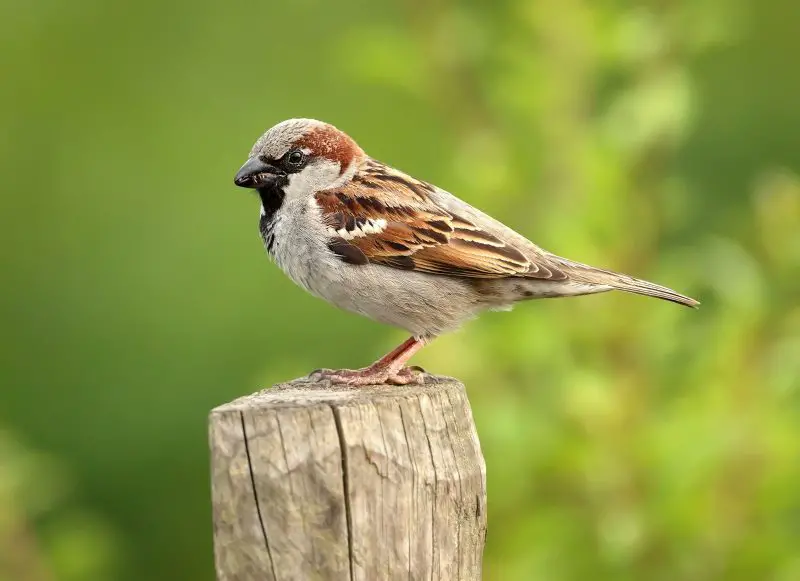
House Sparrows are medium-small birds originally from Europe but now widespread in North America as an invasive species. Males feature gray heads, black throat patches (bibs), and chestnut brown necks, while females are more uniformly brown with streaked backs. They measure roughly 6.3 inches (16 cm) long and have a robust, chunky build.
These sparrows are highly adaptable and thrive in urban and suburban environments, often seen hopping on sidewalks, parks, and around buildings scavenging for scraps. Their vocalizations are loud and constant, consisting of chirps and chatter that mark their presence in human-dominated areas.
In Arkansas, House Sparrows are common in towns and cities, nesting in crevices of buildings, vents, and nest boxes. Their adaptability to human presence allows them to outcompete many native birds in urban areas. They feed mostly on seeds and food waste.
Song Sparrow (Melospiza melodia)
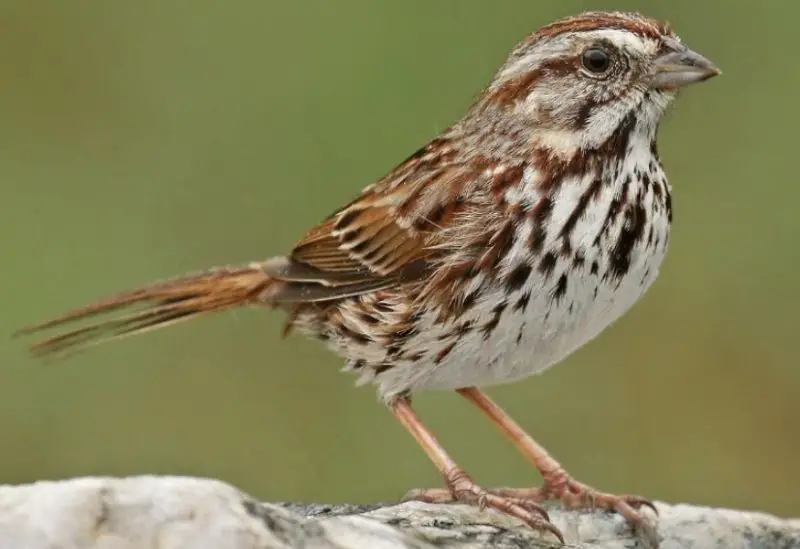
Song Sparrows are medium-sized sparrows easily recognized by their streaked brown and gray plumage and a distinctive dark spot in the center of their breast. They range from about 5 to 7 inches (13-18 cm) in length and have a fairly stocky body.
These birds are well-known for their loud, melodious songs which vary regionally but typically consist of a series of clear, repeated phrases. Song Sparrows spend much time on the ground or in low shrubs, where they search for seeds and insects. They have a somewhat shy but curious demeanor.
In Arkansas, Song Sparrows inhabit a variety of environments including wetlands, thickets, gardens, and brushy fields. They are present year-round and favor dense cover for nesting and protection. Their adaptability makes them one of the most commonly seen sparrows in the state.
House Wren (Troglodytes aedon)
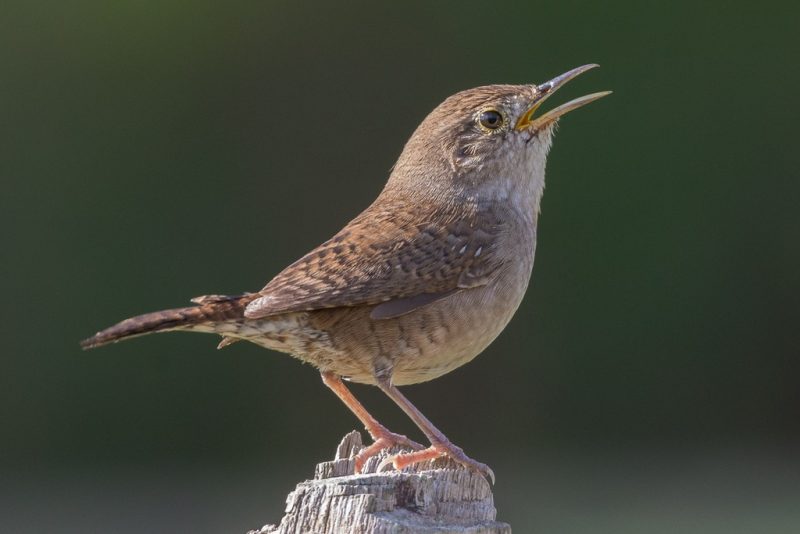
House Wrens are tiny, lively birds approximately 4 to 5 inches (10-13 cm) in length with brown, finely barred plumage and a short, upright tail. Their song is a bubbly, energetic series of trills and whistles that often fills suburban and rural backyards.
These wrens are highly active, constantly flitting and exploring tangled shrubs and brush piles. They often nest in cavities such as old woodpecker holes, birdhouses, or crevices near human structures. Despite their small size, they can be quite bold and territorial during the breeding season.
In Arkansas, House Wrens are common summer residents and prefer shrubby areas, open woodlands, and residential gardens. They play an important role as insect predators, helping control populations of small insects and spiders.
White-breasted Nuthatch (Sitta carolinensis)

The White-breasted Nuthatch is a small bird recognized for its unique ability to climb headfirst down tree trunks. It has a white face and underparts, with a black cap and gray-blue upperparts. These birds measure about 5 to 6 inches (13-15 cm) in length and have a compact, sturdy body ideal for clinging to bark.
They are easy to identify by their habit of moving along tree trunks and branches in all directions, often upside down. Their call is a nasal “yank-yank” sound. White-breasted Nuthatches often wedge seeds or insects into bark crevices, then hammer them open with their strong bills.
In Arkansas, these nuthatches inhabit mature forests, woodlands, and suburban areas with large trees. They are year-round residents and commonly visit backyard feeders offering sunflower seeds or suet.
Carolina Wren (Thryothorus ludovicianus)
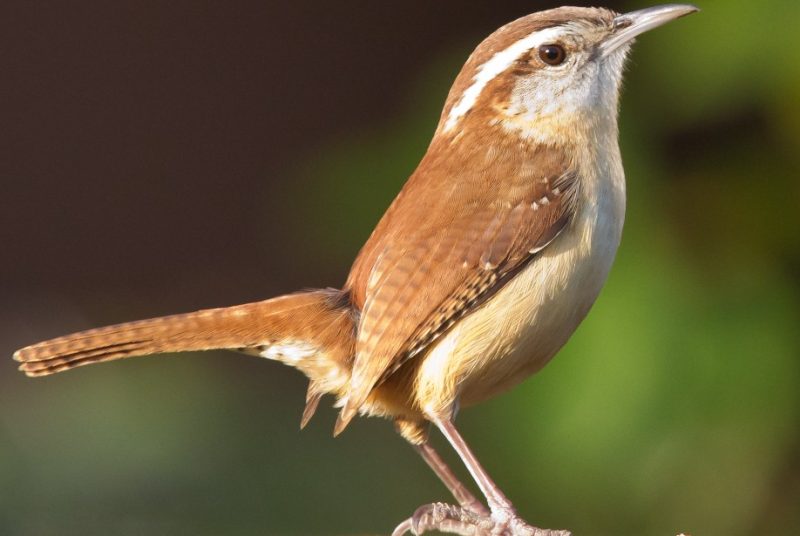
The Carolina Wren is a small, secretive bird with warm reddish-brown plumage and a distinctive white eyebrow stripe. It measures about 4.5 to 5 inches (11-13 cm) in length. Despite its small size, this wren has a loud, musical song that can be heard clearly even in dense vegetation.
They are highly active and agile, often foraging low in shrubs or on the ground for insects and spiders. Carolina Wrens build nests in cavities, birdhouses, or sheltered spots close to human dwellings. Their bold behavior allows them to adapt well to suburban gardens.
In Arkansas, Carolina Wrens are common in forests, thickets, and residential yards. They remain in the area year-round and are known for their persistent singing throughout the day.
Ruby-crowned Kinglet (Corthylio calendula)
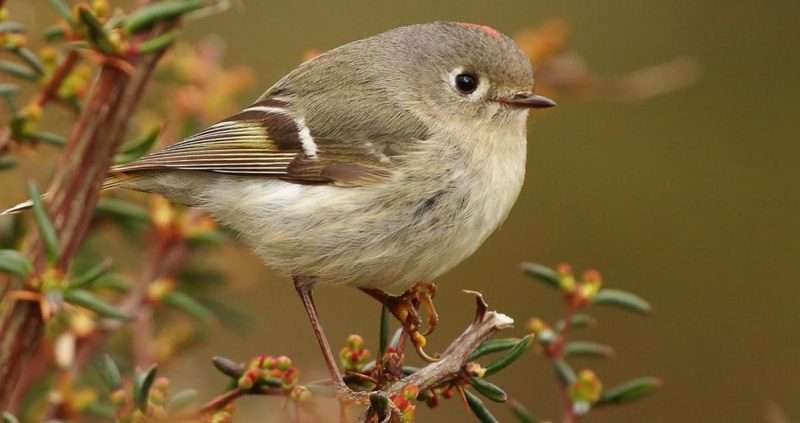
The Ruby-crowned Kinglet is a tiny, energetic bird about 3.5 to 4 inches (9-10 cm) long, with olive-green upperparts and pale underparts. Males display a small, bright red crown patch that is usually hidden but can be raised during excitement or territorial displays.
These kinglets flit rapidly through trees and shrubs searching for small insects and spiders. Their thin, high-pitched song and call notes are quite distinctive. Ruby-crowned Kinglets prefer dense wooded habitats, often found in coniferous or mixed forests.
In Arkansas, they are mainly winter visitors and migrants, seen in forested parks and wooded backyards. Their hyperactive movements and tiny size make them a delightful but challenging bird to spot.
White-crowned Sparrow (Zonotrichia leucophrys)
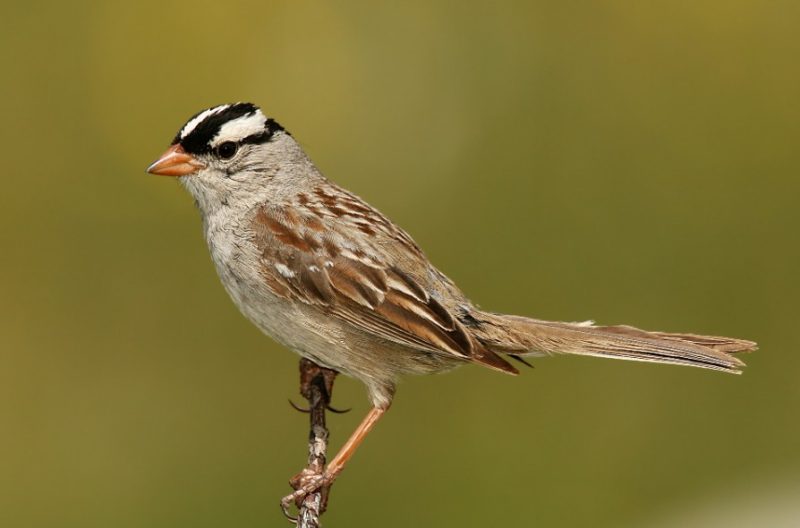
The White-crowned Sparrow is easily recognized by its bold black-and-white striped head and grayish body. It is medium-sized for a sparrow, about 6 to 7 inches (15-18 cm) in length, with a thick bill adapted for seed eating.
These sparrows often forage on the ground in open areas, feeding on seeds and insects. They have a clear, whistled song and are relatively shy, preferring brushy edges and shrubby habitats for cover.
In Arkansas, White-crowned Sparrows are mostly winter visitors found in open fields, brushy areas, and suburban landscapes. They migrate south from northern breeding grounds and return north in spring.
White-throated Sparrow (Zonotrichia albicollis)
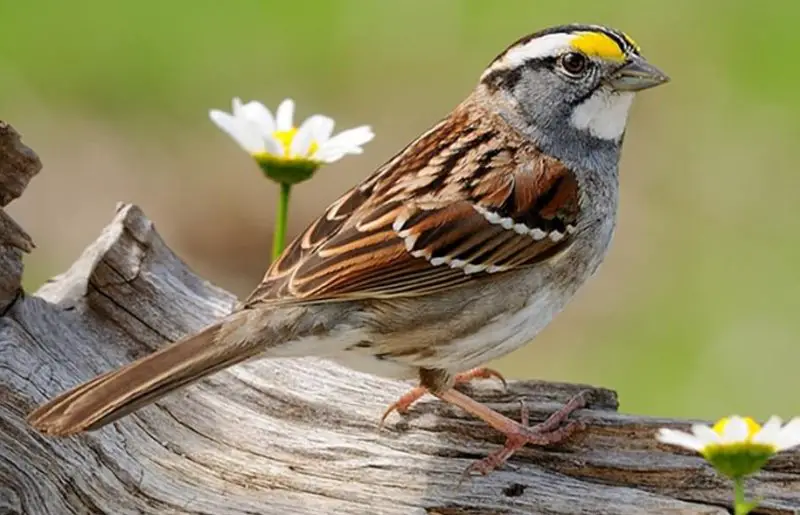
The White-throated Sparrow is a medium-sized sparrow notable for its striking white throat patch and yellow spots between the eyes and bill. It measures about 6 to 7 inches (15-18 cm) in length and has brown streaked upperparts with a gray face.
Its most distinctive feature is its clear, whistled song, often described as “Old Sam Peabody, Peabody, Peabody.” This bird usually forages on the ground, searching for seeds and insects by scratching leaf litter in forests and brushy areas.
In Arkansas, the White-throated Sparrow is mostly a winter visitor, found in woodlands, shrubby fields, and suburban parks. It prefers dense understory vegetation for cover and is often seen during migration seasons.
Red-breasted Nuthatch (Sitta canadensis)
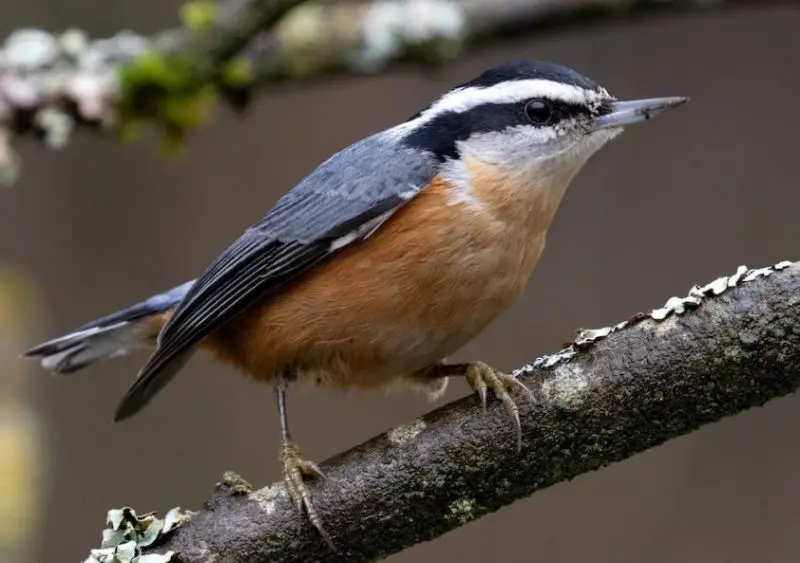
The Red-breasted Nuthatch is a small bird about 4 to 5 inches (10-13 cm) long, with a blue-gray back, reddish-brown underparts, and a distinctive black eye stripe. Its stout bill helps it forage on tree bark for insects and seeds.
This nuthatch is well-known for its nasal, “yank-yank” call, which is higher-pitched compared to the White-breasted Nuthatch. It often climbs tree trunks and branches headfirst, moving quickly and confidently in search of food.
In Arkansas, Red-breasted Nuthatches are usually winter visitors in coniferous or mixed forests and occasionally visit backyard feeders offering sunflower seeds and suet. Their presence varies depending on food availability.
Carolina Chickadee (Poecile carolinensis)
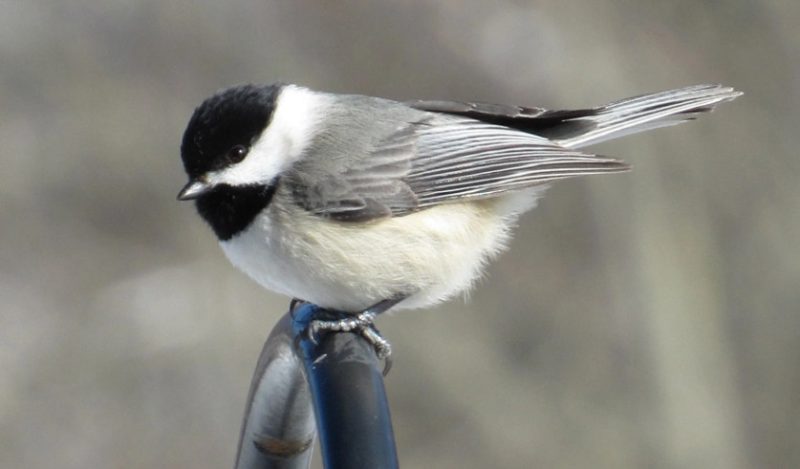
The Carolina Chickadee is a small, curious bird about 4.5 inches (11 cm) long with gray upperparts, white cheeks, and a black cap and bib. It is easily identified by its distinctive “chick-a-dee-dee-dee” call and bubbly song.
This chickadee is very active and social, often seen flitting through trees and shrubs looking for insects and seeds. They commonly cache food to eat later and are frequent visitors to backyard feeders.
In Arkansas, Carolina Chickadees are year-round residents found in forests, woodlands, and suburban gardens. Their bold behavior and distinctive calls make them easy to spot and enjoy.
Tufted Titmouse (Baeolophus bicolor)
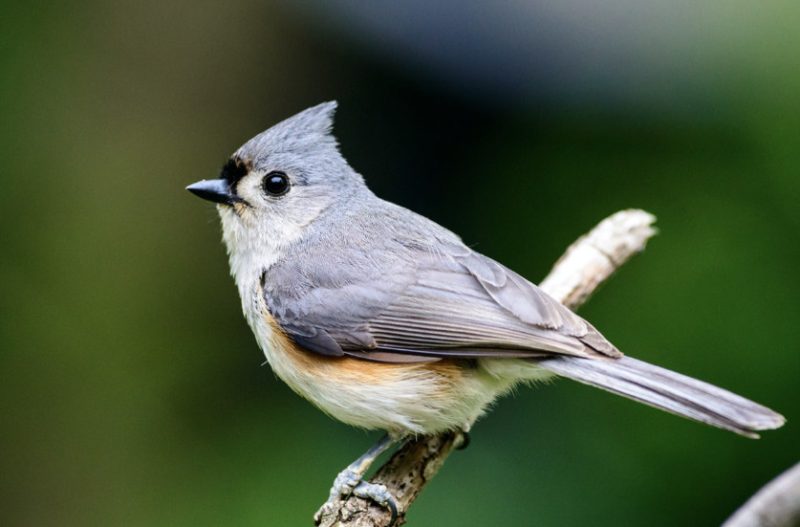
The Tufted Titmouse is a small gray bird about 5.5 to 6 inches (14-15 cm) long, notable for its pointed crest (tuft) on the head and bright black eyes. It has white underparts with rusty flanks and a short, stout bill.
These birds are curious and vocal, with a variety of calls including a clear, whistled “peter-peter-peter.” They move energetically through tree branches and are often seen visiting feeders, where they enjoy sunflower seeds and suet.
In Arkansas, Tufted Titmice are common year-round in woodlands, parks, and residential areas with mature trees. Their boldness and playful behavior make them a favorite among birdwatchers.
Blue-gray Gnatcatcher (Polioptila caerulea)
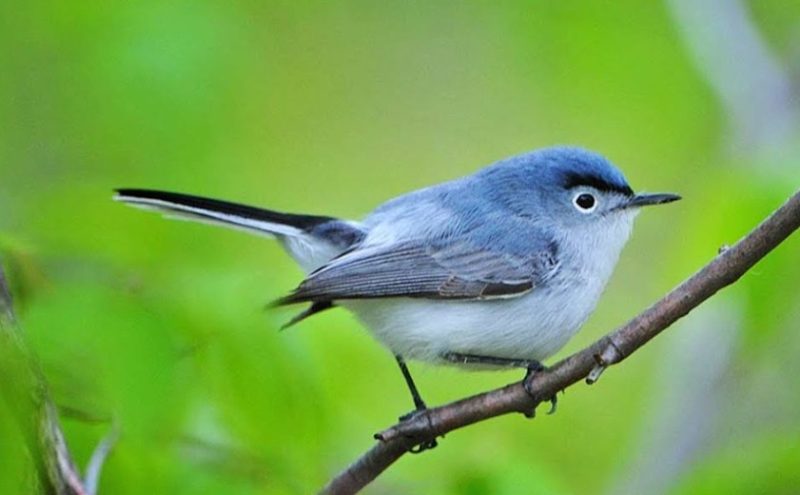
The Blue-gray Gnatcatcher is a tiny, slender songbird about 4 to 5 inches (10-13 cm) long with soft blue-gray upperparts and a long, thin tail edged in white. It has a delicate appearance and large dark eyes.
This bird is highly active, constantly flitting and hovering among tree branches while catching small insects and spiders. Its call is a soft, nasal “zeeeer” or buzzing trill. Blue-gray Gnatcatchers often build small cup nests suspended in tree forks.
In Arkansas, they are common in deciduous forests, woodlands, and suburban areas during the breeding season. Their energetic behavior and subtle coloring can make them a challenge but rewarding to observe.
Brown-headed Nuthatch (Sitta pusilla)
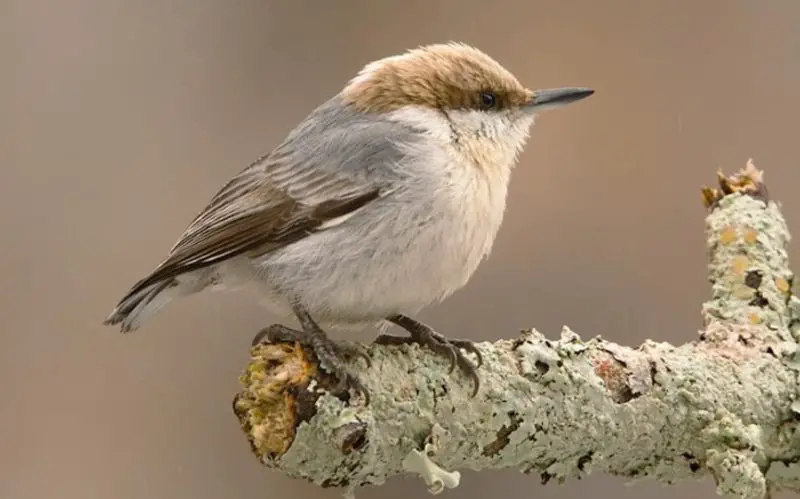
The Brown-headed Nuthatch is a small, active bird measuring about 4 inches (10 cm) long, easily recognized by its distinctive brown cap and pale underparts. Its upperparts are grayish with a short tail and a slightly curved bill suited for probing tree bark.
This nuthatch is known for its lively behavior, frequently climbing and hopping along pine trunks and branches. It uses its strong bill to pry insects from bark crevices and also feeds on seeds. Its call is a soft, nasal “yank-yank” sound, often heard in pine forests.
In Arkansas, Brown-headed Nuthatches are typically found in pine woodlands and mixed pine-oak forests. They are year-round residents and sometimes visit feeders stocked with sunflower seeds and suet.
Bewick’s Wren (Thryomanes bewickii)
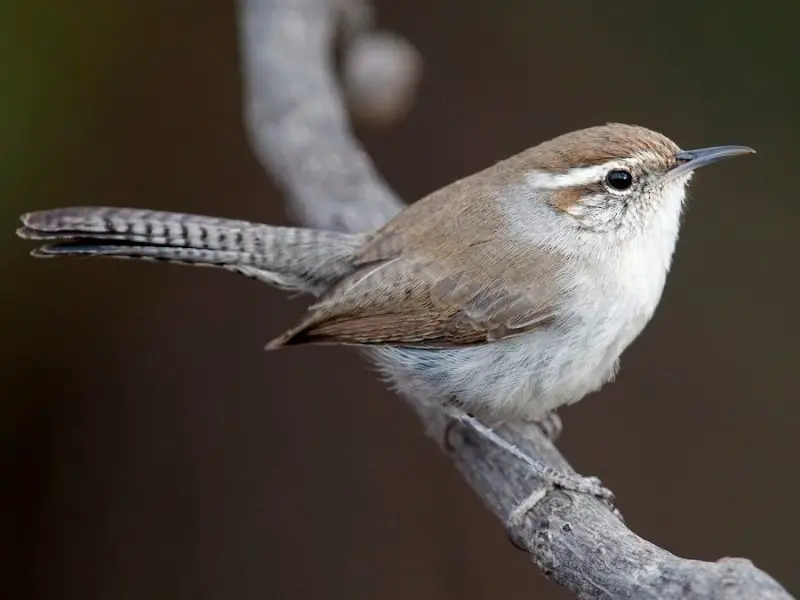
Bewick’s Wren is a small, slender bird about 6 to 7 inches (15-18 cm) long, known for its long, cocked tail and rich brown coloration. It has a pale eyebrow stripe and a white throat that contrasts with its darker back.
This wren is often secretive but vocal, with a complex, melodious song consisting of varied trills and whistles. It forages actively on or near the ground for insects and spiders, flicking its tail frequently as it moves. It nests in cavities, crevices, and sometimes man-made structures.
In Arkansas, Bewick’s Wrens inhabit brushy areas, open woodlands, and edges of forests. They adapt well to suburban environments, often found in dense shrubs and thickets.
Sedge Wren (Cistothorus stellaris)
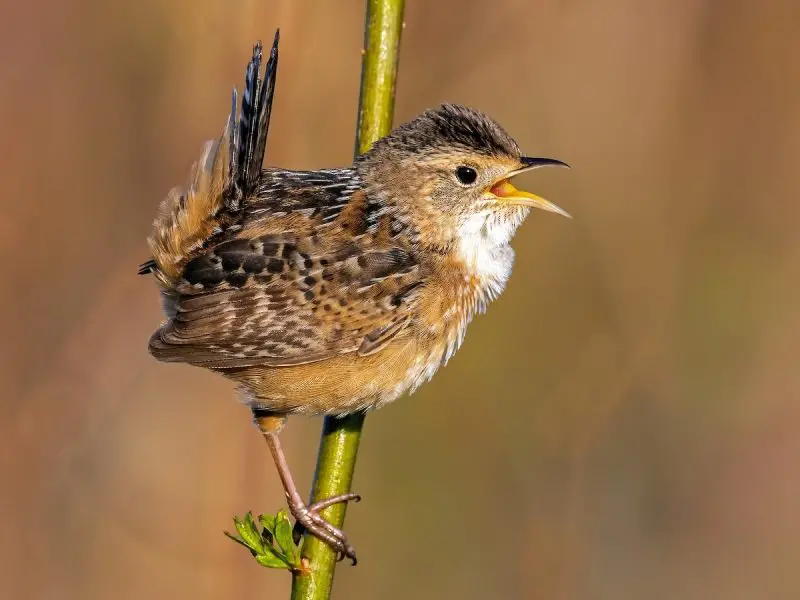
The Sedge Wren is a tiny bird, about 4 inches (10 cm) long, with brown streaked upperparts and a pale belly. It has a short tail often held upright and a faint facial pattern.
This species prefers damp grassy meadows and wetlands where it weaves intricate nests in tall sedges or grasses. Its song is a bubbly series of trills and buzzing notes, often given from concealed perches. The bird feeds primarily on insects and spiders found in its wetland habitat.
In Arkansas, Sedge Wrens are seasonal visitors during breeding season, favoring marshes, wet meadows, and other moist open habitats with dense grass cover.
Swamp Sparrow (Melospiza georgiana)
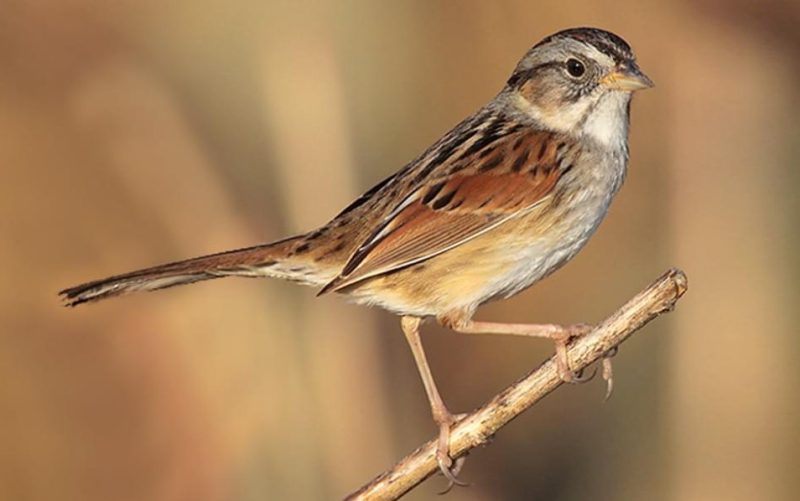
The Swamp Sparrow is a small, stocky bird about 5 to 6 inches (13-15 cm) long, with rusty wings and tail, a gray face, and a warm brown back. Its underparts are pale with subtle streaking.
This sparrow inhabits wetlands and marshy areas, often skulking low in dense vegetation near water. It has a distinctive, musical trill and feeds mainly on insects and seeds found in wet soil and vegetation.
In Arkansas, Swamp Sparrows breed in marshes, swamps, and wet thickets, and can also be seen during migration in similar habitats. Their preference for wet environments makes them a specialist among sparrows.
Field Sparrow (Spizella pusilla)
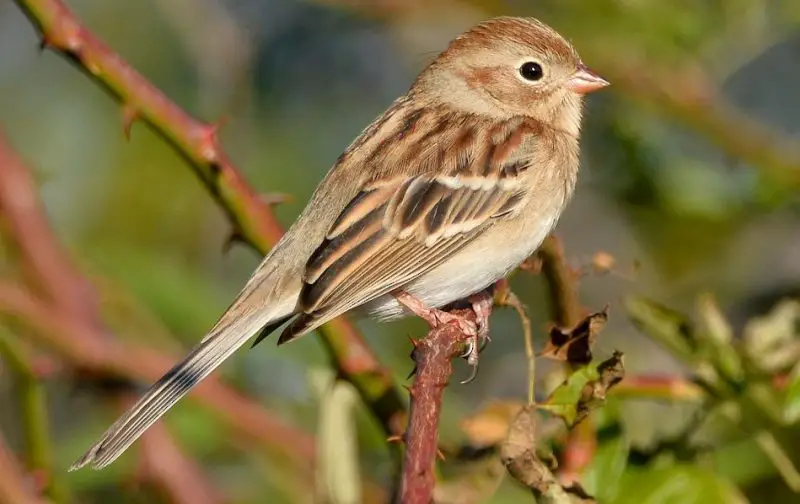
The Field Sparrow is a small, slender sparrow about 5 inches (13 cm) long, with warm brown upperparts and a pale pink bill. It has a plain face with a subtle white eye ring and a delicate, buzzy song.
These sparrows favor open fields, meadows, and brushy edges where they forage on the ground for seeds and insects. They build cup-shaped nests low in grass or shrubs, often hidden from view.
In Arkansas, Field Sparrows are common in rural areas, grasslands, and old fields, especially during the breeding season. Their subtle coloration and soft song make them a pleasant but sometimes overlooked presence.
Savannah Sparrow (Passerculus sandwichensis)
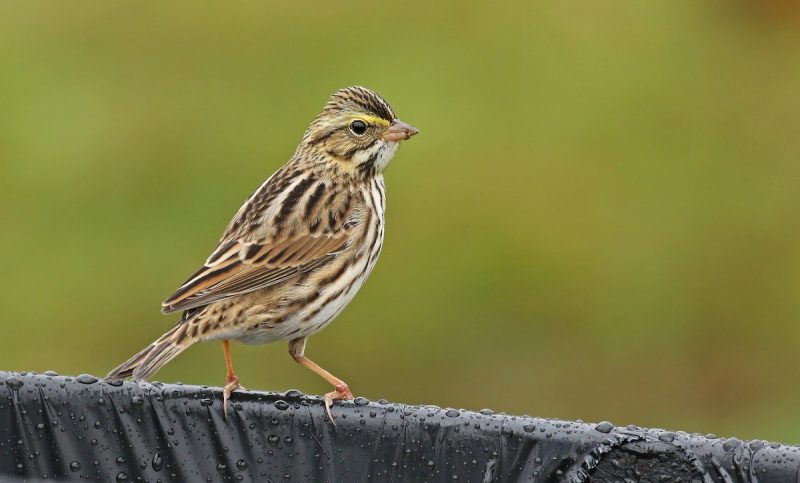
The Savannah Sparrow is a small sparrow about 5 to 6 inches (13-15 cm) long, characterized by its brown, streaked plumage and a distinct yellow patch near the eye. Its back is heavily streaked, while the breast shows fine streaks with a white belly.
This bird is often found in open habitats such as grasslands, fields, and marsh edges. It has a sharp, buzzy song, and forages primarily on the ground for seeds and insects. Savannah Sparrows tend to be shy but can be seen during flight displays in breeding season.
In Arkansas, Savannah Sparrows are seasonal visitors mostly during migration and winter. They prefer open grassy areas and farmland, often blending well into their surroundings with their cryptic plumage.
Northern Cardinal (Cardinalis cardinalis)
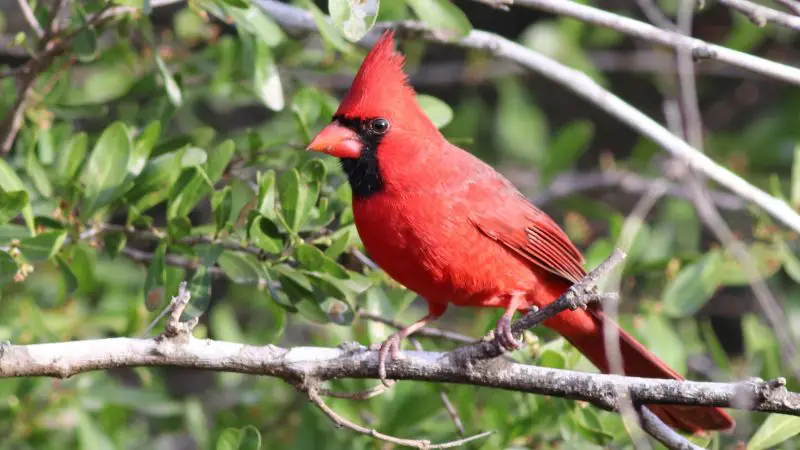
The Northern Cardinal is one of the most recognizable birds in Arkansas, known for the male’s brilliant red plumage and distinctive pointed crest. Females are more muted with warm tan feathers and reddish highlights on wings and tail. Both sexes have a strong, conical orange-red bill.
Cardinals are vocal birds with a loud, clear whistle and are often seen perched conspicuously in shrubs, trees, or backyard feeders. Their size is about 8 to 9 inches (20-23 cm), making them medium-sized songbirds.
In Arkansas, Northern Cardinals are common year-round residents found in woodlands, gardens, and suburban areas. Their bright colors and melodic songs make them a favorite among birdwatchers.
Mourning Dove (Zenaida macroura)
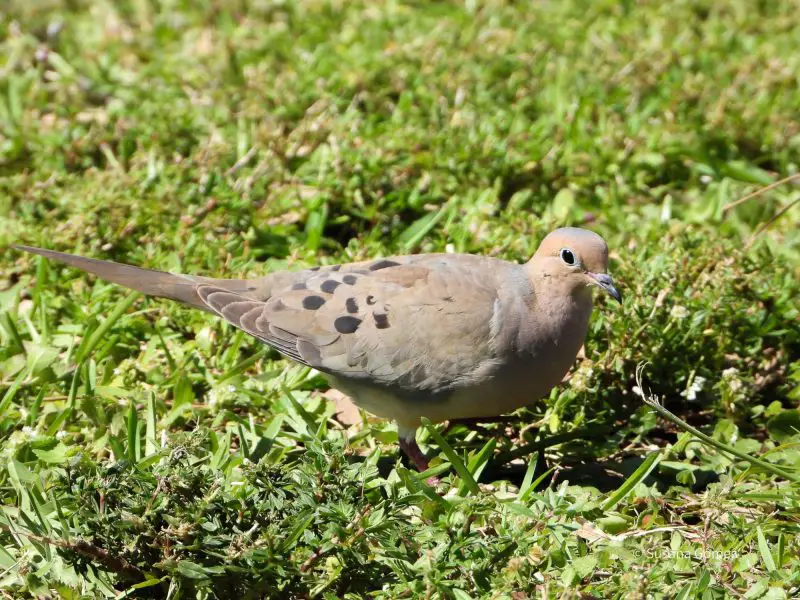
The Mourning Dove is a slender, medium-sized bird about 11 to 13 inches (28-33 cm) long with soft grayish-brown plumage and subtle black spots on the wings. It has a long, pointed tail and a delicate build.
This species is named for its mournful, drawn-out cooing call, often heard early in the morning or at dusk. Mourning Doves forage on the ground, feeding mostly on seeds. They are known for their gentle flight with rapid wingbeats.
In Arkansas, Mourning Doves are widespread year-round in open woodlands, fields, and suburban neighborhoods. They often nest on tree branches or building ledges, adapting well to human presence.
Eastern Bluebird (Sialia sialis)
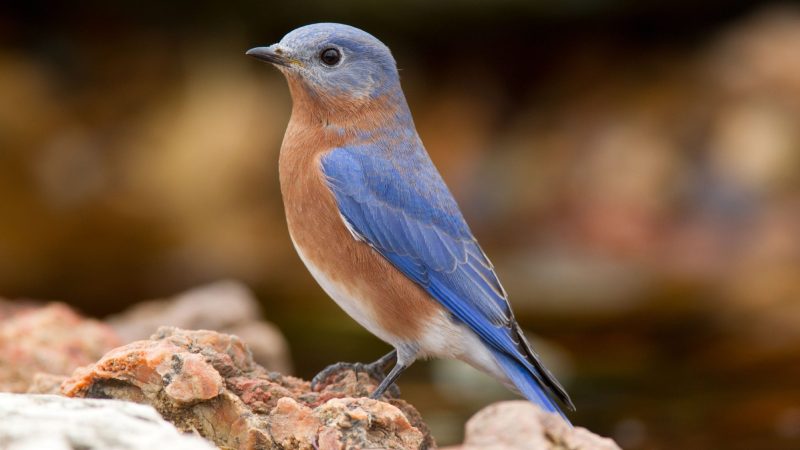
The Eastern Bluebird is a small thrush about 6 to 7 inches (15-18 cm) long, with vibrant blue upperparts and a rusty orange breast. Females have duller blue-gray tones but share the same general coloration pattern.
These birds are commonly found in open woodlands, farmlands, and orchards where they perch on fence posts and wires. Their soft, melodic whistles and fluting calls are easily recognized. Eastern Bluebirds feed mainly on insects and berries.
In Arkansas, they are year-round residents that readily use nest boxes and natural cavities for breeding. Their bright plumage and charming behavior make them a beloved sight in rural and suburban areas.
American Robin (Turdus migratorius)
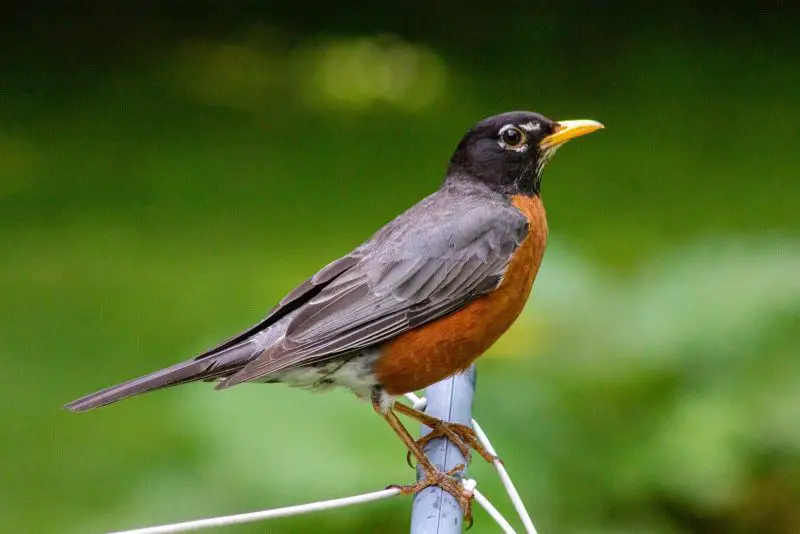
The American Robin is a familiar and widespread bird measuring about 9 to 11 inches (23-28 cm) long. It has a striking reddish-orange breast, gray-brown back, and a white throat with black streaks.
Robins are often seen hopping on lawns and open areas searching for earthworms and insects. Their rich, melodious song marks the arrival of spring and can be heard throughout the day. They build bulky nests in trees or shrubs using grass and mud.
In Arkansas, American Robins are common year-round residents and migrants. They thrive in parks, gardens, and forests, easily adapting to human environments.
Northern Mockingbird (Mimus polyglottos)
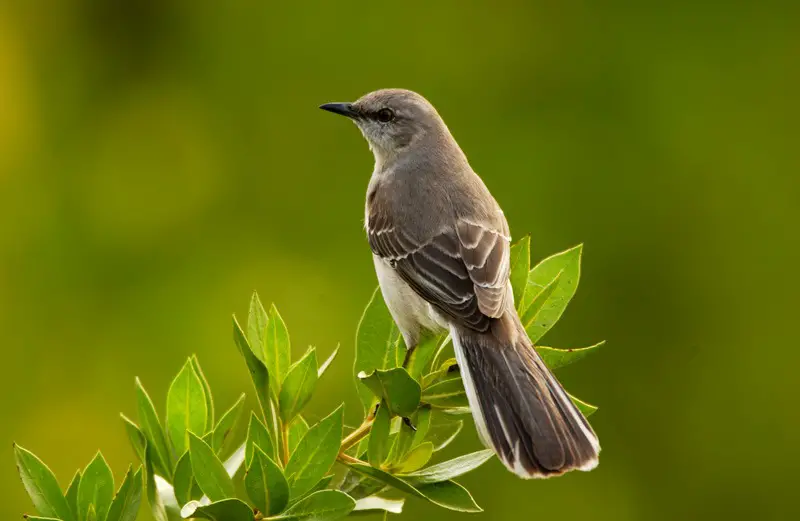
The Northern Mockingbird is a medium-sized songbird about 9 to 11 inches (23-28 cm) long, recognizable by its gray upperparts, white underparts, and long tail with white wing patches. This bird is famous for its extraordinary ability to mimic the songs of other bird species, as well as sounds from its environment like car alarms or whistles.
Mockingbirds are highly territorial and vocal, often singing loudly both day and night, especially during breeding season. Their song consists of a wide variety of phrases repeated several times, sometimes switching to imitate different calls in quick succession. They forage on the ground or in low vegetation for insects, fruits, and berries.
In Arkansas, Northern Mockingbirds are common year-round residents found in open woodlands, suburban yards, and parks. Their bold behavior and impressive vocal repertoire make them popular among bird enthusiasts.
Brown Thrasher (Toxostoma rufum)
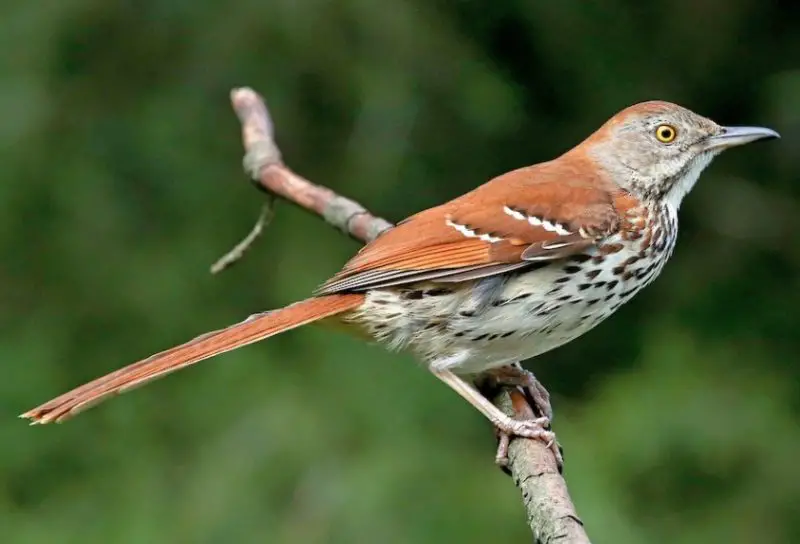
The Brown Thrasher is a large, secretive bird measuring about 10 to 12 inches (25-30 cm) long, with rich reddish-brown upperparts and heavily streaked underparts. It has a long tail and a slender, slightly curved bill. Its eyes are bright yellow, adding to its distinctive look.
Known for its complex and melodious song, the Brown Thrasher can sing over 1,000 different song phrases, often delivering them in rapid sequences. It forages by sweeping leaf litter aside with its bill to uncover insects, seeds, and berries. Thrashers are often shy and prefer dense brushy habitats.
In Arkansas, Brown Thrashers inhabit woodlands, thickets, and shrublands, especially in areas with dense understory. They are mostly year-round residents, though some local movement occurs.
Red-winged Blackbird (Agelaius phoeniceus)
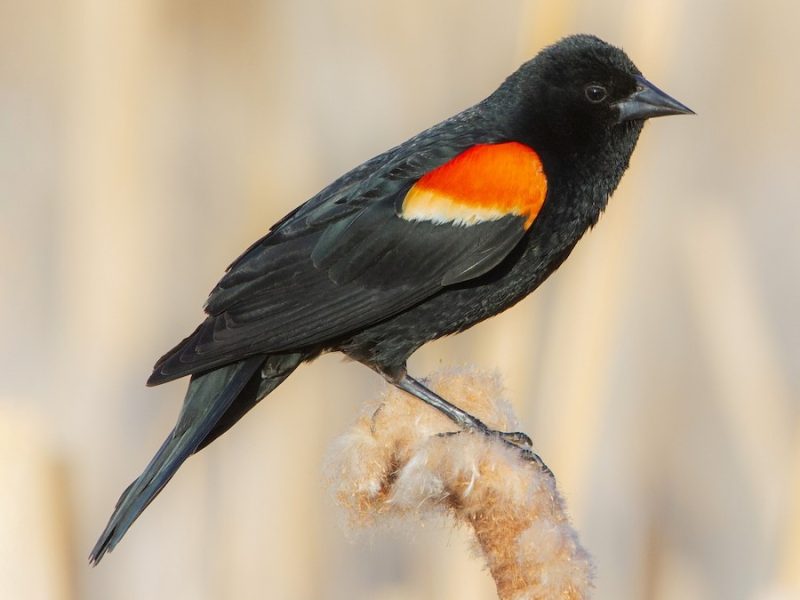
The Red-winged Blackbird is a medium-sized blackbird about 9 to 11 inches (23-28 cm) long. Males are glossy black with striking red and yellow shoulder patches (epaulets), while females are brown and heavily streaked for camouflage.
Males are highly territorial and use their bright shoulder patches to display dominance during breeding season. Their song is a distinctive, gurgling “conk-la-ree!” often heard over marshes, fields, and wetlands. They feed on seeds, insects, and occasionally small amphibians.
In Arkansas, Red-winged Blackbirds are abundant in wetlands, marshes, agricultural fields, and roadside ditches. They nest in dense vegetation near water and form large breeding colonies.
Common Grackle (Quiscalus quiscula)
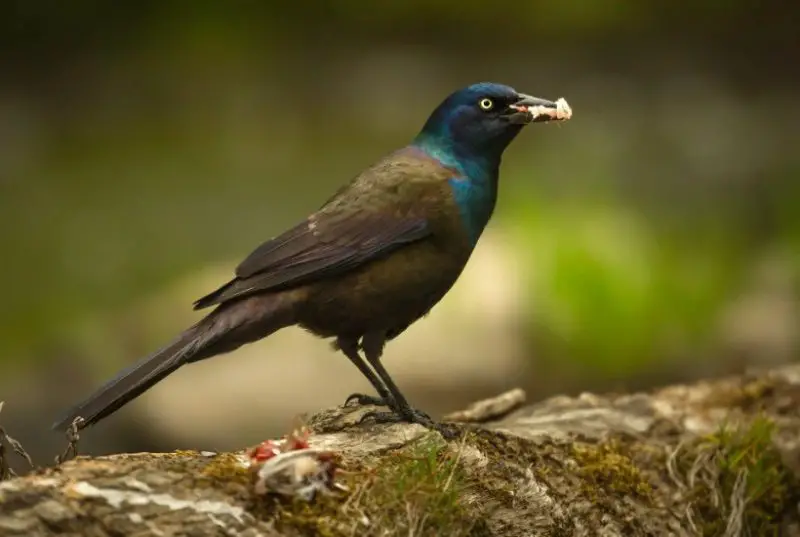
The Common Grackle is a large blackbird measuring 11 to 12 inches (28-31 cm) in length. Its glossy black plumage shimmers with iridescent hues of purple, blue, and green, especially noticeable in sunlight. It has a long tail and a sturdy bill.
Grackles are social birds often found in large flocks, feeding on insects, seeds, grains, and even small vertebrates. Their call is a harsh, raspy “readle-eak” sound. They are adaptable and can be seen in urban, suburban, and rural environments.
In Arkansas, Common Grackles are common year-round and frequently gather in large roosts. They thrive in agricultural areas, parks, wetlands, and cityscapes.
European Starling (Sturnus vulgaris)

The European Starling is a medium-sized passerine about 7 to 9 inches (18-23 cm) long with iridescent black feathers that shine with green and purple hues. Its bill is pointed and varies in color seasonally, yellow in breeding season and darker at other times.
This species is highly adaptable and known for its ability to mimic other birds and environmental sounds. Starlings forage on the ground for insects, fruits, and seeds and often form massive flocks called murmurations. Their vocalizations are varied and complex.
In Arkansas, European Starlings are widespread in urban, suburban, and rural areas. As an invasive species, they compete aggressively with native birds for nesting sites.
Blue Jay (Cyanocitta cristata)

The Blue Jay is a medium-sized bird measuring about 9 to 12 inches (23-30 cm) long, known for its striking blue, white, and black plumage. It has a prominent crest on its head, a white face with a black collar, and blue wings and tail with distinctive black barring.
Blue Jays are highly vocal and intelligent birds. They produce a variety of calls, including loud jeers and mimicry of hawk calls to warn or deceive other birds. Their behavior is bold and social, often seen in noisy groups foraging for nuts, seeds, and insects.
In Arkansas, Blue Jays are common year-round in woodlands, parks, and suburban areas. They are known for their adaptability and often visit backyard feeders, especially in fall and winter when acorns are abundant.
American Crow (Corvus brachyrhynchos)
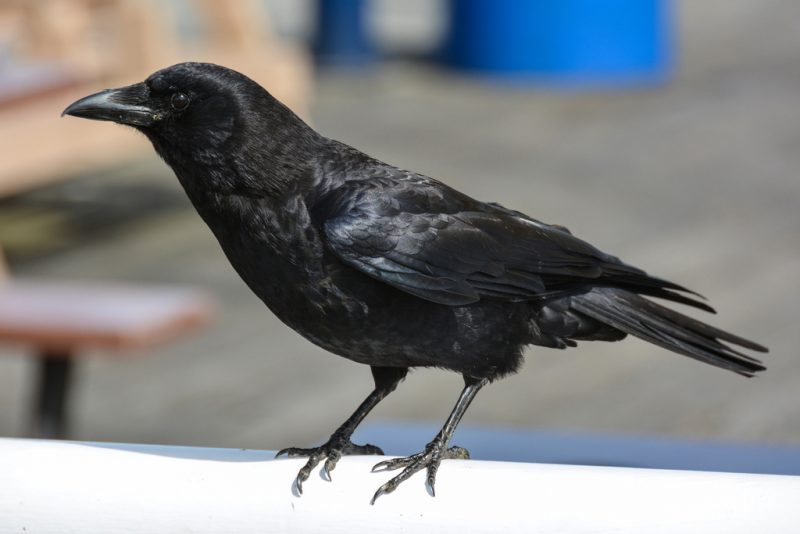
The American Crow is a large, all-black bird about 16 to 21 inches (40-53 cm) long, with glossy feathers and a strong, straight bill. It is known for its remarkable intelligence and problem-solving abilities.
Crows are highly social and adaptable birds, living in groups called murders. They have a wide range of vocalizations and complex communication methods. They feed on a diverse diet including insects, small animals, grains, and human scraps.
In Arkansas, American Crows are widespread year-round across forests, fields, towns, and cities. Their presence is often noticeable due to their loud “caw” calls and large, noisy flocks.
Eastern Towhee (Pipilo erythrophthalmus)
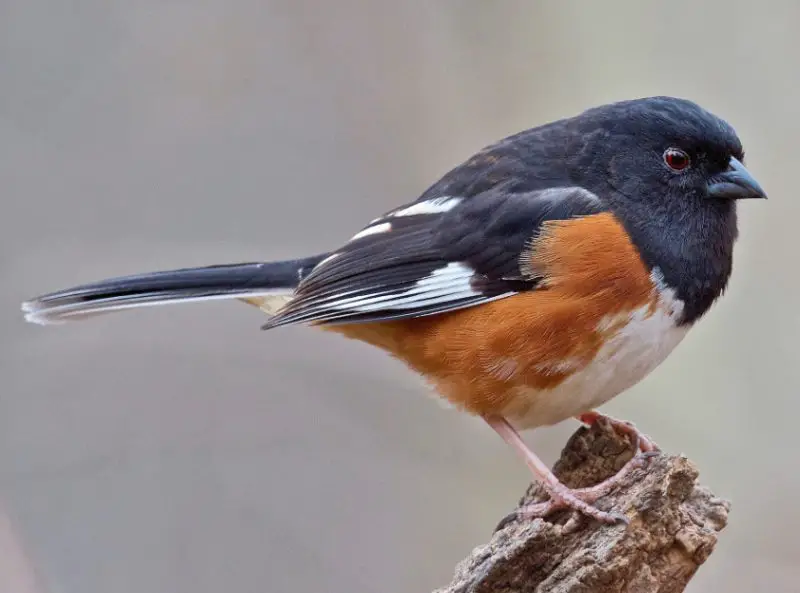
The Eastern Towhee is a sparrow-sized bird about 7 to 9 inches (18-23 cm) long, with striking black upperparts, a white belly, and rufous sides. Males are typically black and white with reddish-brown flanks, while females have more brownish tones.
This bird is famous for its distinctive “drink-your-tea” song, a clear, rhythmic series of notes often heard from dense shrubs. Eastern Towhees forage mainly on the ground, scratching leaf litter to uncover insects, seeds, and berries.
In Arkansas, Eastern Towhees are year-round residents found in thickets, forest edges, and overgrown fields. They prefer dense vegetation for nesting and cover, and are commonly heard during the breeding season.
Harris’s Sparrow (Zonotrichia querula)
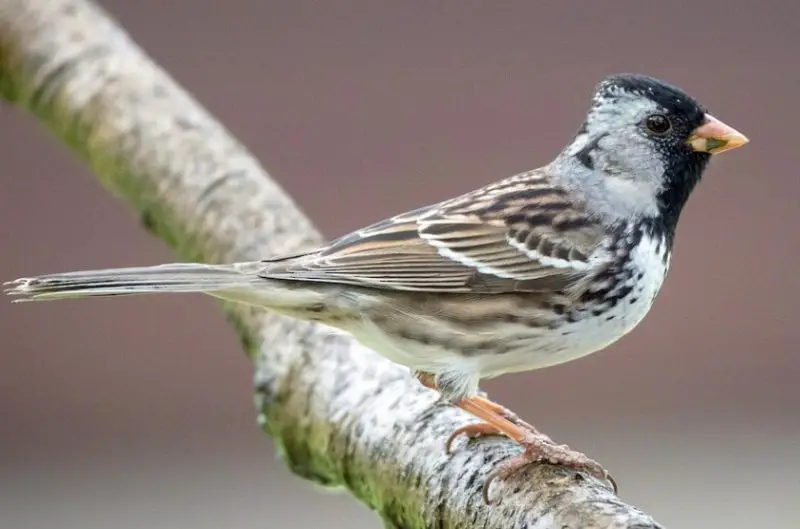
Harris’s Sparrow is a large sparrow measuring about 7 to 8 inches (18-20 cm) in length. It is easily identified by its distinctive black crown and bib, contrasting with white cheeks and gray upperparts.
This species has a rich, melodic song consisting of clear whistles and trills. Harris’s Sparrows are ground foragers, feeding on seeds and insects, often found in open woodlands and brushy habitats.
In Arkansas, Harris’s Sparrows are uncommon visitors during migration and winter. They prefer areas with dense shrubs or scattered trees, often inhabiting edges of forests or fields.
Lark Sparrow (Chondestes grammacus)
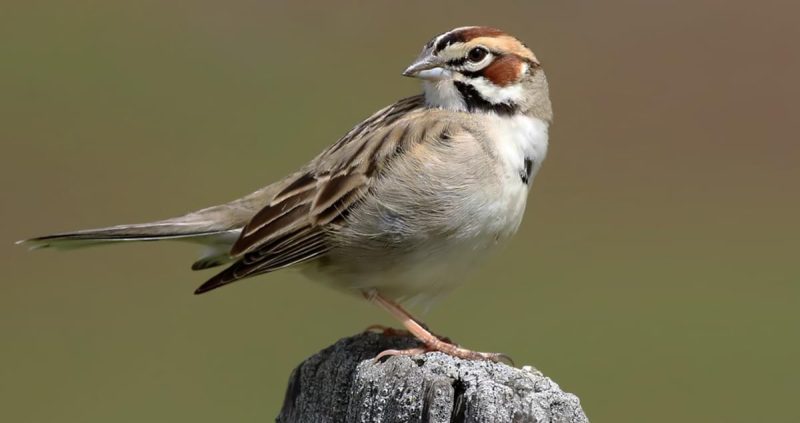
The Lark Sparrow is a medium-sized sparrow about 6 to 7 inches (15-18 cm) long, with a distinctive face pattern including a chestnut crown, white eyebrow stripe, and black cheek patches. Its back is brown with streaks, and it has a white belly.
This sparrow’s song is a series of clear, melodious whistles and trills often heard in open fields and grasslands. Lark Sparrows forage on the ground for seeds and insects and are known for their graceful, fluttering flight displays during courtship.
In Arkansas, Lark Sparrows breed in open habitats like grasslands, farms, and roadsides. They prefer open, grassy areas with scattered shrubs or trees for perching.
FAQ about Small Birds in Arkansas
What are some common small birds found in Arkansas?
Arkansas hosts a variety of small birds including American Goldfinch, Dark-eyed Junco, House Sparrow, Song Sparrow, House Wren, and many others. These birds can be found in habitats ranging from backyards and woodlands to wetlands and open fields.
When is the best time to see small birds in Arkansas?
The best times for birdwatching small birds in Arkansas are during migration seasons—spring (March to May) and fall (September to November)—as many species pass through. Additionally, breeding season in late spring and summer offers chances to observe nesting behaviors.
Where do small birds in Arkansas typically live?
Small birds in Arkansas occupy diverse habitats. Some prefer wooded areas and forests, like the White-breasted Nuthatch, while others thrive in open fields and meadows, such as the Savannah Sparrow. Many species adapt well to suburban and backyard environments.
What do small birds in Arkansas eat?
Their diet varies by species but generally includes seeds, insects, berries, and small fruits. For example, American Goldfinches primarily eat seeds, while House Wrens focus more on insects.
How can I attract small birds to my backyard in Arkansas?
To attract small birds, provide a mix of seed feeders (sunflower, nyjer), fresh water sources, native plants that produce seeds and berries, and safe nesting sites like birdhouses or brush piles. Avoid pesticides to ensure an insect-rich environment.
Are any small birds in Arkansas endangered or threatened?
Most common small birds in Arkansas have stable populations, but habitat loss and environmental changes can impact some species. It’s important to support local conservation efforts to maintain healthy bird populations.




